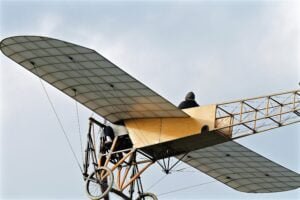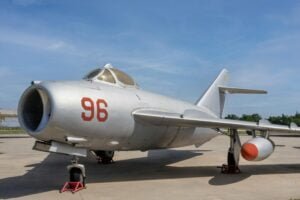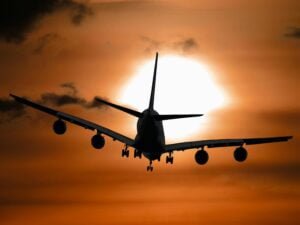Aviation has transformed from a distant dream to the beating heart of global transportation. It’s an adventure that began with mythic flights and has gone on to revolutionize how we see our world. Let’s explore the history of aviation, from its tentative steps to the sky to today’s sophisticated aircraft.
The Dawn of Human Flight: Myths and Early Dreams
Human fascination with flight dates back to ancient times. Myths from various cultures speak of humans who dreamed of flying. One of the most famous stories is that of Icarus and Daedalus from Greek mythology. They fashioned wings from feathers and wax, highlighting the eternal human desire to soar through the skies.
Early Experiments: The Pioneers of Aviation
Leonardo da Vinci’s Vision
Leonardo da Vinci was among the first to seriously study aerodynamics. In the 15th century, he sketched designs for flying machines, including the ornithopter—a device inspired by birds flapping their wings. Though his designs never flew, they laid the groundwork for future inventors.
The Wright Brothers: Taking Flight

The Wright brothers, Orville and Wilbur, are often credited with the first powered flight. On December 17, 1903, they flew their aircraft, the Wright Flyer, for 12 seconds over Kitty Hawk, North Carolina. This momentous event marked the beginning of modern aviation. Their success stemmed from rigorous experimentation and a deep understanding of aerodynamics and control systems.
Aviation in War: A Catalyst for Innovation

World War I: The Birth of Aerial Combat
World War I saw the first significant use of aircraft in combat. Airplanes were initially used for reconnaissance but quickly evolved into tools for aerial combat and bombing. This period was crucial for the development of more robust and reliable aircraft.
World War II: Accelerating Innovation
World War II brought further advancements. Aircraft became faster, more durable, and capable of carrying heavier loads. The introduction of the jet engine, first used by the Germans, marked a significant leap. This innovation would later transform both military and civilian aviation.
The Golden Age of Aviation: Commercial Flight Takes Off

The Dawn of Commercial Aviation
In the 1920s and 1930s, airlines began to emerge, offering passenger services. The Ford Trimotor and the Douglas DC-3 were among the pioneering aircraft. These planes provided more comfortable and reliable flights, making air travel accessible to the public.
The Jet Age: Shrinking the World
The 1950s and 1960s saw the advent of the jet age. Aircraft like the Boeing 707 revolutionized air travel, cutting travel time significantly and making international travel more feasible. This era marked the beginning of global tourism and the interconnected world we live in today.
Modern Aviation: Technology and Sustainability
Technological Advancements
Today’s aircraft are feats of engineering, featuring state-of-the-art technology. Fly-by-wire systems, advanced avionics, and composite materials make modern planes more efficient and safer. Innovations like the Airbus A380 and the Boeing 787 Dreamliner have set new standards in passenger comfort and operational efficiency.
Sustainability and the Future

The aviation industry is also focused on sustainability. Efforts are underway to develop electric and hybrid-electric aircraft to reduce carbon emissions. Sustainable aviation fuel (SAF) and improvements in fuel efficiency are critical to making aviation greener.
For more on how aviation is evolving towards sustainability, you can check platforms like Aviation Today.
Conclusion: The Ongoing Journey of Aviation
Aviation has come a long way since the Wright brothers’ first flight. Its history is a testament to human ingenuity and the relentless pursuit of dreams. From ancient myths to cutting-edge technology, the story of aviation is a remarkable journey that continues to unfold. As we look to the future, the sky is truly the limit.
For further reading, explore the Smithsonian National Air and Space Museum for extensive resources on the history of aviation.
Are you captivated by the history of flight and eager to be part of its future?
The Palu School of Aviation invites you to embark on a journey of discovery and learning.
By studying at Palu School of Aviation, you’ll have the opportunity to contribute to the ongoing evolution of aviation and leave your own mark on this exciting field.
Don’t miss this chance to soar higher. Enroll today and experience the thrill of aviation firsthand.
Visit our website or contact us to learn more and start your aviation adventure
